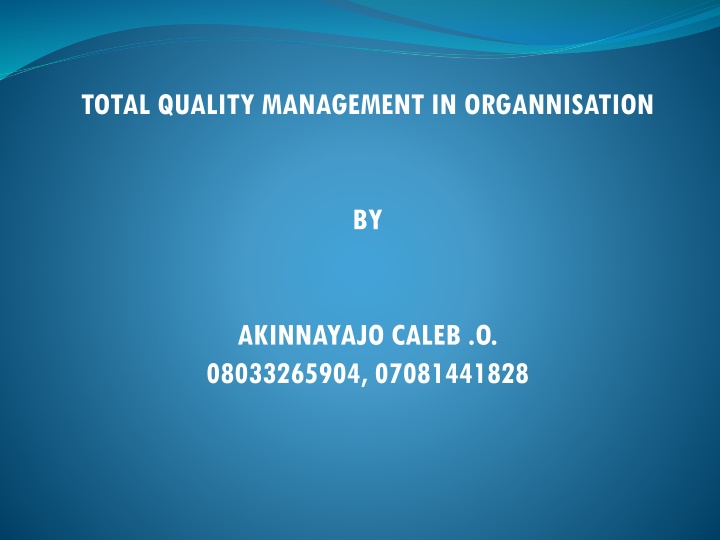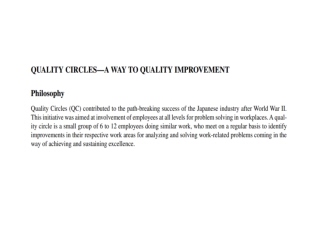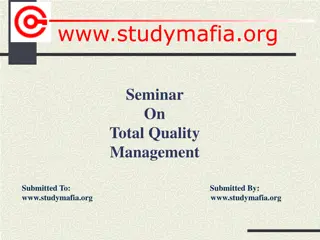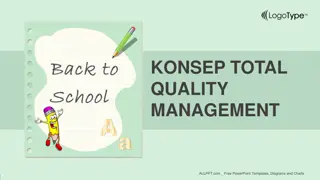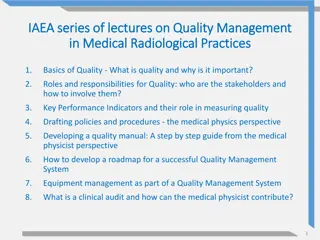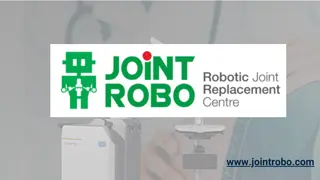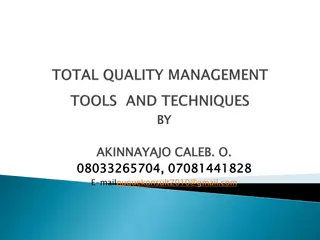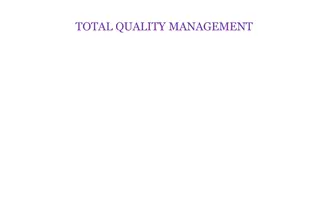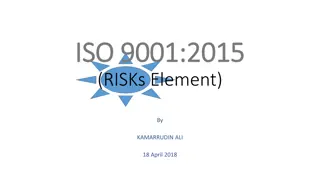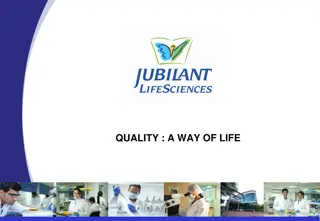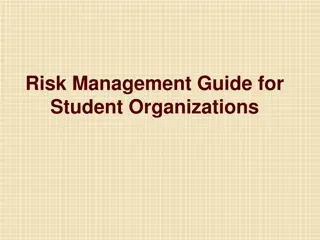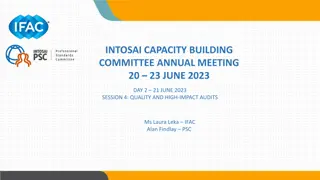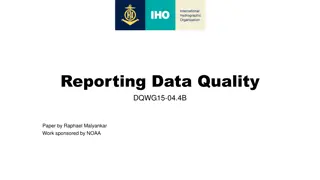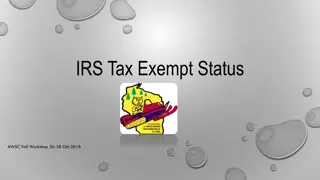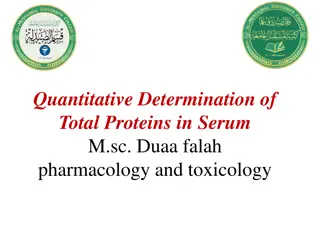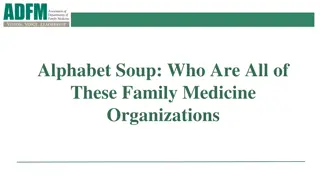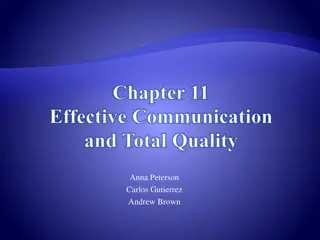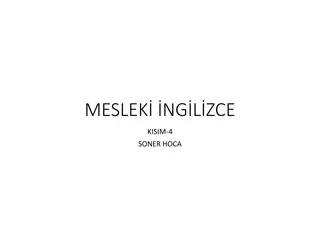Total Quality Management in Organizations: A Comprehensive Guide
Explore the essence of Total Quality Management in organizations by understanding its principles, key elements for success, the importance of a quality management system, ISO standards, commonalities in approaches, and much more. Learn about meeting customer requirements, continuous improvement, employee empowerment, and the significance of quality in every aspect of operations.
Download Presentation

Please find below an Image/Link to download the presentation.
The content on the website is provided AS IS for your information and personal use only. It may not be sold, licensed, or shared on other websites without obtaining consent from the author.If you encounter any issues during the download, it is possible that the publisher has removed the file from their server.
You are allowed to download the files provided on this website for personal or commercial use, subject to the condition that they are used lawfully. All files are the property of their respective owners.
The content on the website is provided AS IS for your information and personal use only. It may not be sold, licensed, or shared on other websites without obtaining consent from the author.
E N D
Presentation Transcript
TOTAL QUALITY MANAGEMENT IN ORGANNISATION BY AKINNAYAJO CALEB .O. 08033265904, 07081441828
Total Quality Is ....... Meeting our Customer s Requirements Doing Things Right the First Time; Freedom from Failure (Defects) Consistency (Reduction in Variation) Continuous Improvement Quality in Everything We Do
A Quality Management System Is.... A belief in the employee s ability to solve problems A belief that people doing the work are best able to improve it A belief that everyone is responsible for quality
Elements for Success Management Support Mission Statement Proper Planning Customer and Bottom Line Focus Measurement Empowerment Teamwork/Effective Meetings Continuous Process Improvement Dedicated Resources
ISO 8402 and 9000: Quality and QM The totality of characteristics of an entity that bear on its ability to satisfy stated and implied needs ISO 8402 Quality management: activities performed to formulate and implement policies and programs intended to achieve quality. Examples: _quality planning, _quality control, _quality improvent
ISO 9000: Eight Principles Customer focus (on needs and requirements) Leadership (establish unity of purpose, direction, environment for participation) Involvement of people (full) Process Approach (managing activities & resources) Systems Approach ( of inter related processes) Continual Improvement (of processes and performance) Factual Approach to Decision Making (analysis of data/info) Mutually Beneficial supplier relationships
Commonalities in QM Approaches QM approaches tend to view quality in terms of value produced by business processes for customers Reshape and control process to get quality Tend to take a systems, but not a complex adaptive systems approach Emphasize scientific approaches, empirical investigation, statistical analysis, formal knowledge processing Emphasize metrics and measurement View QM as an integrated set of activities designed to have a direct impact on all business process and their inter- relations
Commonalities in QM Approaches Use technological and particularly IT tools and techniques Employ a wide range of analytical techniques and also social interaction and human intervention techniques Emphasizes strongly the elimination of errors before they happen: prevention Strong emphasis on cause-and-effect analysis suggesting a deterministic view of quality Strong emphasis on leadership and its role in QM Widespread emphasis on organizational learning framework to produce knowledge needed for achieving quality
Quality Concepts Zero defects - implies that there is no tolerance for errors within the system _ The goal of all processes is to avoid defects in the product or service - Similar to six sigma: almost zero defects The customer is the next person in the process - The internal organization has a system that ensures the product or service is transferred to the next person in the process in a complete and correct manner. - The product or service being built is transferred to another internal party only after it meets all the specifications and all actions at the current work station. - Avoids incorrectly assembled components and poor workmanship
Quality Concepts Do the right thing right the First Time (DTRTRFT) - Implies that it is easier and less constly to do the work right the first time than it is to do it the second time. - entails the training of personnel to ensure sufficient skills and tools to correctly complete the work Continuous improvement process (CIP) (From Japanese work Kaizen) - A sustained, gradual change to improve the situation - Differs from innovation does not make a sudden jump to a plateau where it matures over time. - focuses on 11 principles: constancy of purpose, commitment to quality, customer focus and involvement , process orientation, continuous improvement, system-centered management, investment in knowledge, teamwork, conservation of human resources, total involvement, and perpetual commitment.
Project Characteristics/Attributes that bear on quality Rroducibility (technology required) Ability of a product or service to be produced within the existing technology, human resources, skills, knowledge, and materials at a cost compatible with market expectations. Rroducibility is one of the most critical aspects of developing any new product. Usability (effort expended to use) The ability of a product to perform its intended function for the specified user under the prescribed conditions. Usability is determined by examining performance, function and condition of a product
Project characteristics/Attributes that bear on quality Reliability (MTBF) The degree to which a unit of equipment performs its intended function under specified conditions for a specified period of time. Computed by 2 methods of Mean Time Between Failure (MTBF): -predicted MTBF: based on a mathematical computation of a component failure using a tree diagram to determine sequential failure aspects of the component rated periods. Least desirable method because it cannot account for environmental variations that can degrade components to lower rates. - Actual MTBF: Use of field collected data to compute that failures under realistic operating conditions to find the average time between failure. The actual reliability will seldom be the same as the predicted reliability
Project Characteristics/Attributes that bear on quality Maintainability (Mean-Time-To-Repair: MTTR) The ability of a unit to be restored within a specified time to its performance capability under the environmental operating conditions within a specified, average period of time Availability (probability of performance) The probability of a product being capable of performing a required function under the specified conditions when called upon The key parts of availability are reliability and maintainability . Operability (Expected conditional use) The ability of a product to be operated by human resources for specified periods of time under given conditions without significant degradation of the output. Flexibility (Expected variable use) The ability of a product to be used for different purposes at different capacities and under different conditions.
Project Characteristics/Attributes that bear on quality Social Acceptability (Environment and safety) - the degree of compatibility between the characteristics of a product or service and the prevailing values and expectations of the relevant society - The degree to which a public accepts a product for use. Affordability (Return for quality required) - The ability to develop, acquire, operate maintain, and dispose of a product over its life.
Cost of Quality Cost of quality is the toal price of all efforts to achieve product or service quality. This includes all work to build a product or service that conforms to the requirements as well as all work resulting from nonconformance to the requirement. The typical project should have a goal of between 3-8% of the total value as the cost of a quality program depending on the type of project and its total dollar value. - cost to buld right the first time - training programs - statistical process control (SPC) costs o Cost of a quality system is often viewed as a negative cost because errors in work have been traditionally accepted as a cost of doing business.
Cost of Conformance Planning Training and indoctrination Process control Field testing Product design validation Process validation Test and evaluation Quality audits Maintenance and calibration
Cost of Nonconformance Scrap Rework Expediting Additional material or inventory Warranty repairs or service Complaint handling Liability judgments Product recalls Product corrective actions
Cost of Non-Quality Cost of non-quality is estimated to be 12 20 % of sales. Waste of time and materials Rework of poor quality products Additional material Delays in schedule Product and service image Corporate image
Major Cost Categories of Quality Prevention cost cost to plan and execute a project so that if will be error-free Appraisal Cost cost of evaluating the processes and the output of the processes to ensure the product is error free defect before the customer receives the product External failure Cost cost incurred due to errors detected by the customer. This includes warranty cost, field service personnel training cost, complaint handling, and future business losses. Measurementand Test Equipment capital cost of equipment used to perform prevention and appraisal activities.
Opportunities for Reducing Cost Just-in-Time - concept of zero inventory in a manufacturing plant. Reduces cost of storing and moving parts: cost of inventory: cost of parts damaged through handling, etc. Product life Cycle Cost concept of reducing overall product life cycle cost by linking the cost areas of the maintenance) and considering each one s cost implications for the other. Product maturity identifying, documenting, and correcting failures early helps products achieve stability earlier in the life cycle.
Opportunities for Reducing Cost Areas of waste in projects - Waste in rejects of completed work - Waste in design flaws - Waste in work-in-process - Waste in motion for manpower (under-trained employee) - Waste in management (improper direction of work) - Waste in manpower (Misplaced or waiting workers) - Waste in facilities (Ordering excess material) - Waste in expenses (Unnecessary meetings, travel)
Quality and people in project Management Management defines type and amount of work Management is 85% responsible for quality The employee can only assume responsibility for meeting the requirements of completing the work when the employee. Knows what s expected to meet the specifications Knows how to perform the functions to meet the specifications Has adequate tools to perform the function Is able to measure the performance during the process Is able to adjust the process to match the desired outcome
Quality and People in Project Management Project quality team consist of: - Senior Management - Project Manager - Project Staff - Customer - Vendor, suppliers, and contractors - Regulatory Agencies
